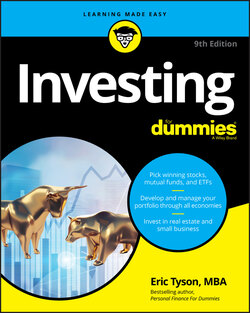Читать книгу Investing For Dummies - Eric Tyson - Страница 75
Considering your age
ОглавлениеWhen you’re younger and have more years until you plan to use your money, you should keep larger amounts of your long-term investment money in growth (ownership) vehicles, such as stocks, real estate, and small business. As I discuss in Chapter 2, the attraction of these types of investments is the potential to really grow your money. The risk: The value of your portfolio can fall from time to time.
The younger you are, the more time your investments have to recover from a bad fall. In this respect, investments are a bit like people. If a 30-year-old and an 80-year-old both fall on a concrete sidewalk, odds are higher that the younger person will fully recover and the older person may not. Such falls sometimes disable older people.
A long-held guiding principle says to subtract your age from 110 and invest the resulting number as a percentage of money to place in growth (ownership) investments. So if you’re 35 years old:
If you want to be more aggressive, subtract your age from 120:
Note that even retired people should still have a healthy chunk of their investment dollars in growth vehicles like stocks. A 70-year-old person may want to totally avoid risk, but doing so is generally a mistake. Such a person can live another two or three decades. If you live longer than anticipated, you can run out of money if it doesn’t continue to grow.
These tips are only general guidelines and apply to money that you invest for the long term (ideally for ten years or more). For money that you need to use in the shorter term, such as within the next several years, more-aggressive growth investments aren’t appropriate. See Chapters 7 and 8 for short-term investment ideas.
